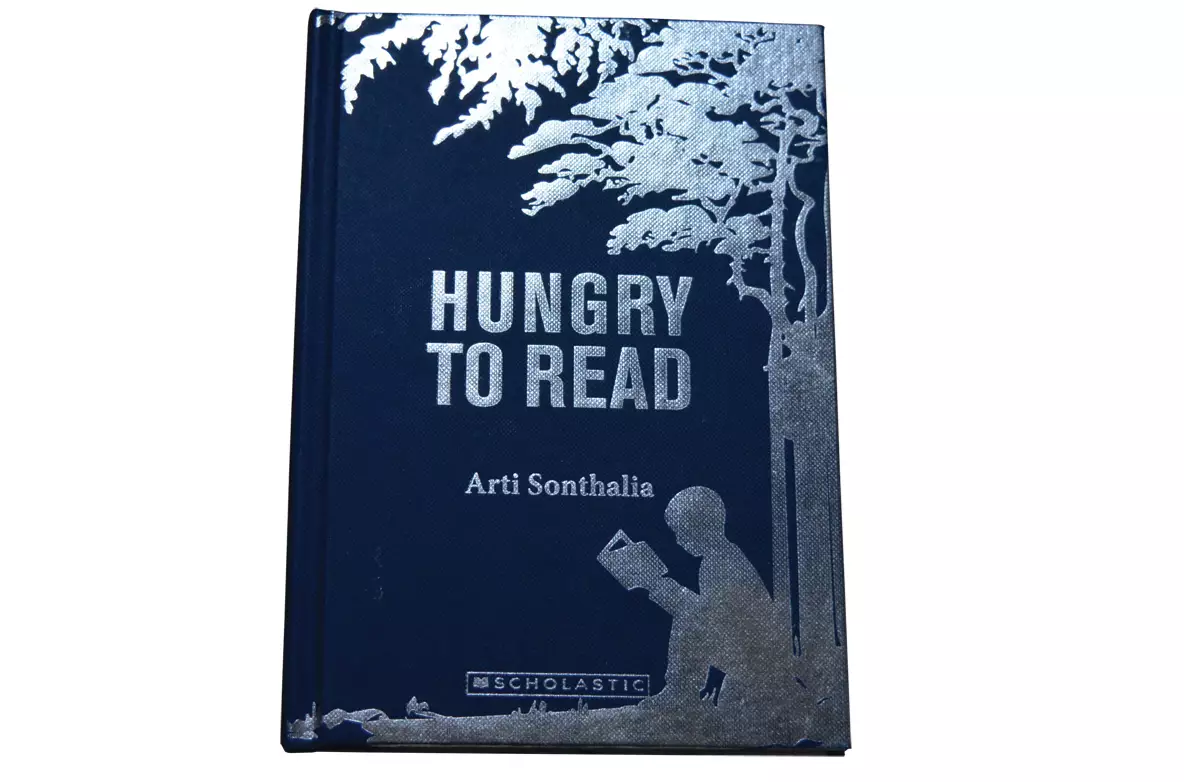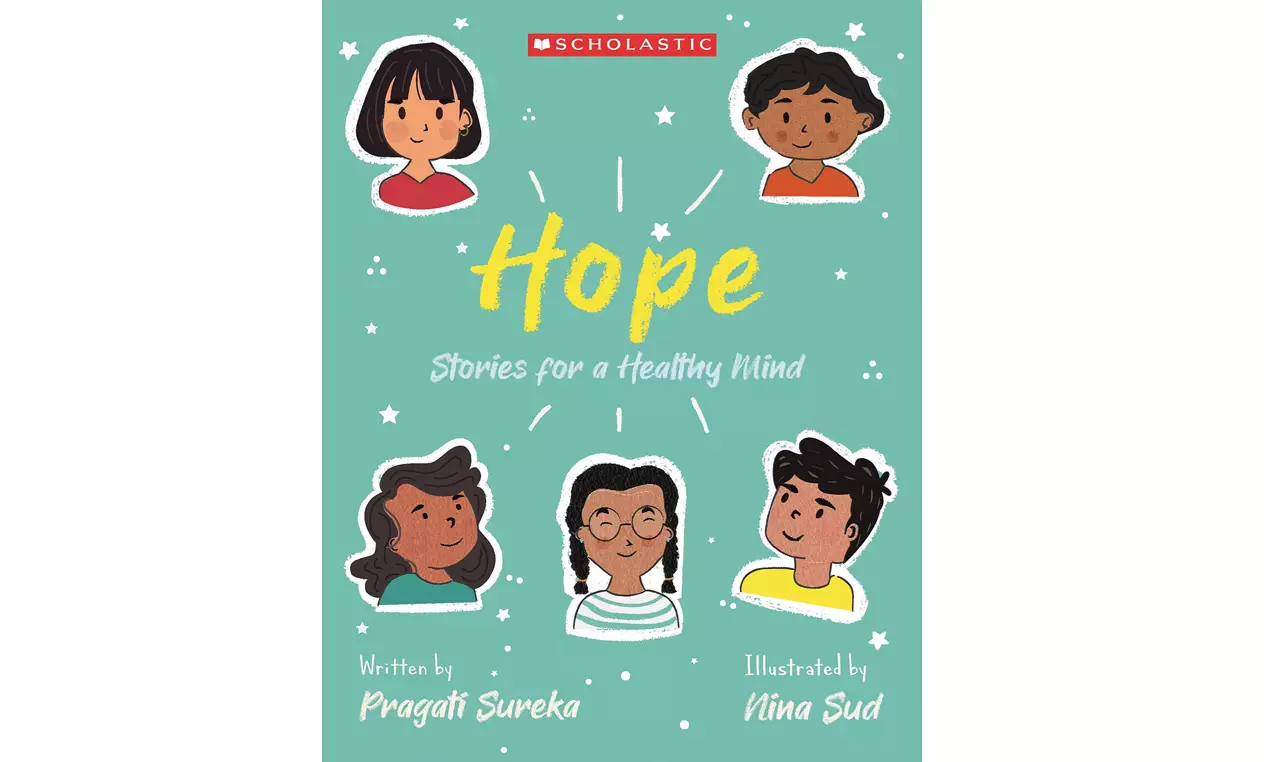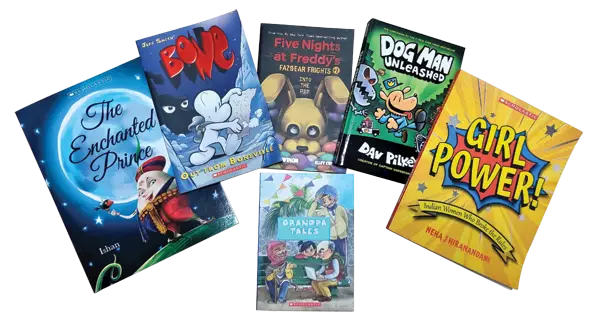It’s time books are defined as an essential commodity
Neeraj Jain shares the details about the ‘value proposition of Indian publishing’ report and the current state of Indian publishing. And it’s not all bad news, as Jain says, “We were equal to the task and innovative enough to manage the impact,” in an exclusive interview with PrintWeek’s Dibyajyoti Sarma
10 Nov 2021 | By Dibyajyoti Sarma
PrintWeek: The value proposition of Indian publishing: Trends, challenges, and future of the industry report by the Association of Publishers in India and EY-Parthenon paints a rather flattering picture of the Indian publishing industry. Valued at Rs 500-billion in 2019, the industry is set to be Rs 800-billion by 2024. Yet, there seems to be issues galore — from copyright to piracy to lack or rising cost of paper to a disrupted supply chain ecosystem. Under the circumstances, what is your takeaway from this report?
Neeraj Jain: I’d like to start by giving you a background of why the report was conceived in this format and what was our intent when we started discussing the report with EY-Parthenon.
Nielsen’s report on the Indian market was done for the first time back in 2015 which gave a baseline for the size of Indian publishing.
This report was planned to move ahead from where we were rather than embarking on an updated version of the same. Forming a focus group and setting up the scope was one of the first things we envisioned. Bringing aboard a partner who has the expertise and knowhow for creating such a research-based report was essential.
Our focus for this report was very clear, we needed something that would provide a wider lens with which the publishing industry was looked at and encompass each and every area we work in and how we contribute to making India a knowledge economy. It was important for us to depict all the things in the value-chain where we contribute; especially in areas like capacity building for teachers, research, setting up of KPOs in India, with a sustained focus on Indian arms of publishing companies supporting the global teams on various pre-publishing, publishing and post-publishing functions. We also wanted to use this report to highlight our efforts on creation of digital assets which have proved hugely beneficial for educational institutes during the ongoing pandemic and would be equally useful post pandemic to build a strong blended learning environment.

PW: How will it help the industry?
NJ: This report will help establish the publishing industry as a critical knowledge partner for all stakeholders like individual consumers, educational institutes, educationists, partner industries and the government of India.
One of the first takeaways we wanted from this report was to outline the full spectrum of activities and impact they have, rather than limiting it to the size of the industry or just focus on number of titles and number of copies sold.
Furthermore, we wanted this report to become the “go-to document” for all the partners in the publishing industry (including pre- and post-publishing services), printing industry, and educational institutes both in school as well as higher education. The report is also expected to highlight the future roadmap for the industry and aims to be used as a blueprint that effectively serves internal and external audiences.
We envision this document as a key report that would help various ministries and departments under the government of India to visualise how we could become key partners in each of their initiatives. For example, Make in India, Make for Global, AtmaNirbhar Bharat, NEP implementation and all others.
The value proposition of Indian publishing: Highlights
- Among the developing countries, India has the second-largest publishing infrastructure, second only to China
- The size of the total publishing market is projected to reach Rs 800-billion by 2024 from Rs 500-billion in 2019
- In terms of revenue, publishing is one of the largest media-related industries in India, larger than print media, digital media, filmed entertainment, and radio and music
- India is dominated by educational book publishing with a small share of trade book publishing
- There are some 250-million students at the school level and more than 35-million at the higher education level. These students rely primarily on books as the medium for learning. Thus, the Indian publishing industry makes an integral part of the Indian education system
- The industry helps with the dissemination of scientific research and plays an essential role in the advancement of research and development
- The publishing industry promotes Indian culture, values and excellence by enabling the continued production of knowledge in regional languages
- Print books currently dominate (90%) the publishing landscape in India. Digital formats account for a very small share or 8-10% of the market
PW: What is the role of the Association of Publishers in India in the betterment of Indian publishing?
NJ: One of the key roles of the Association of Publishers in India is to represent international publishers at various forums, highlight the contributions made by them and also ensure that the challenges faced by them are brought to the attention of relevant authorities. We also work closely with key departments to reduce/eliminate the challenges faced by us by making representations and engaging these departments in discussions with our representatives.
PW: Last year, the Indian Book Market was dented. How has it been for you?
NJ: The Indian book market was also impacted in the same way as the overall economy. I feel one of the good things in the last year was that we were equal to the task of being innovative enough to manage the impact. One of the things which impacted us all was the fact that books are not defined as an essential commodity by GOI. We are working to have that corrected in the near future. In fact, it was not dented from a user perspective. Many publishers offered free digital resources for education and research purposes which led to a wider readership.

PW: How did the pandemic impact education publishing in India?
NJ: The pandemic did have its impact on education publishing, in particular print publishing. Unfortunately, both the lockdowns were during the peak of prescription cycle and that meant it was difficult to ensure timely supplies. It also resulted in higher inventories for education publishers. As we all know school education is driven by books being available at school and the schools have remained shut since the onset of Covid which has made it worse for education publishing in India.
At the same time, I would like to highlight one of the positives of the pandemic. In my view, it has strengthened the relationship between publishers and educational institutes as all publishers have gone out of their way to help and support educational institutes in digital delivery of education by not only providing digital resources but by supporting the training needs too. I have seen numerous examples of digital resources being provided to the educational institutes by the publishers for free to ensure that learning gaps are minimised.
Everyone, including we (Scholastic) are working round the clock to ensure the needs of educational institutes are met not just during the pandemic but towards the long-term objective of blended learning post the pandemic.

PW: But the situation is improving, isn’t it?
NJ: The situation is definitely improving and we are hopeful that in the coming months, we will be back on track. A few things that can help our growth prospects are — including books in the list of essential commodities; schools reopening; and opening up of retail across the country (currently eCommerce has been fuelling the growth in the absence of retail). We, at our end, are planning various activities to boost growth. One of the initiatives we have launched along with FICCI is called Roz Ek Nayi Kahani. We are working to use this initiative to drive readership in a big way.
PW: Apart from Covid-related challenges, the industry has been severely impacted by price hikes due to substrate hike plus a substantial hike in other input costs such as manpower, starch, freight and other overheads which has been calculated as 60-70%. Did this impact you?
NJ: Rising costs have been a huge challenge for the publishing industry. Key contributors to rising costs have been the fact that we have been put on the nil list for GST which doesn’t allow us to get the credit of GST included in the costs, RCM on royalty, import duty imposed on books, rising paper costs and freight costs. Add to this a significant strain on working capital due to delayed payments and increased inventory. All of this has been clearly captured in the report. We have also been equally impacted as has been the impact on the overall industry.
PW: Has the pandemic scenario led you to any innovation the way books are made?
NJ: I think audiobooks have been seen in a very different light in the last few years. Partly, it was due to the whole new dimension it was adding to the newer ways of consuming content, and obviously, the pandemic helped it cement further. The other thing I observed during the pandemic is that reading is getting a lot more emphasis. This was not the case in the last decade, and the situation has acted as a catalyst for parents and teachers to actively promote the habit amongst their students and children respectively. I’ve observed some of the schools putting in a lot of effort to make these books come alive in the online delivery of education. I am hopeful that these efforts in some schools might see a multiplier effect if shared properly with others.
PW: How do we make the printed book more popular in India?
NJ: I would always start by saying that we should make books and reading more popular and printed books would definitely benefit from this approach. If we try to focus on making the printed book more popular then we might not be able to increase the pie size in a big way. Once we are able to increase the readers without emphasising on the medium of consumption, we would have increased the pie of readers manifold. One of the researches we had done at Scholastic in 2015 clearly spelt out that 64% of students who had been exposed to an eBook preferred a print book (Source: Kids and Family Reading Report, 2015) and therefore, if we make them readers then number of printed books in circulation would automatically increase.
PW: What are the most profound changes the pandemic has brought upon the book publishing industry? Do you think some of these changes will be permanent? If yes, what would be those?
NJ:One of the most important changes that this pandemic has brought is that everyone has started focussing on working capital management and that has made everyone think about inventory woes and has made each of us focus better on cost benefit analysis of large print-runs vs multiple short runs and I feel this might be permanent in nature. With the new facility of print on demand in place the inventory can be managed in the short term.
Neeraj Jain on publishing best practices

What kind of time factors do you abide by?
We, at Scholastic, were always more tuned to the timeliness and used to look at a turnaround time of three-four weeks but we are now looking at further shortening it.
How did the pandemic months affect your systems / workflow?
The pandemic months had a huge impact on systems/workflow, as books have not been a part of the essential items list (unfortunately) and that meant that we could not operate our warehouses and could not ensure supplies. We had other challenges too, I guess the one stated above is one of the biggest.
Are you producing shorter runs, more frequently, in the past 12 months?
Yes, that is true.
Digital printing will remedy the bottleneck that book printers are finding. Has it benefited you?
Yes, digital printing has had its own positive impact and I am very hopeful that this would continue post-pandemic.
Do you require your print suppliers to provide additional services?
I always believe in focusing on things that we do the best and leave the rest to others rather than trying to do everything ourselves. I believe if print suppliers can help the publishers by ensuring that part of operations post printing of books is managed by them then we can focus on generating great content rather than focussing on operations.
How are eBooks affecting your requirements for physical books?
EBooks are gaining but not as fast as we would have thought during these difficult times. Our perspective on this is that eBooks can help increase the number of readers in a society which in the longer term would have a very positive impact on books both print and digital.
You have been a publisher for some time now. How many old tenets are still relevant—and your team follows them?
Book publishing companies and books in general are critical to the socio-cultural fabric of society. The relevance of books is well documented. India has a rich tradition of books and stories and to that extent the old tenets are very relevant. As I’ve mentioned earlier, adopting new strategies and having a blended approach is the key.
One book title which was a feather in your cap? Why?
I would say a book called Hope – Stories for a Healthy Mind would be worth mentioning. Since the pandemic, mental health has become a major concern. Books have been constantly recommended to keep one’s mind fresh and healthy (by the GOI, especially). We’re happy to have published a book on such an important and relevant topic.
One thing about Indian books which is most underrated?
The diversity of Indian books is not highlighted enough. We have such a rich culture of language, region and religion. No other country has such depth and range as we do.
If you could make a change to a rule you’ve followed over the years, what would it be?
One rule that I would wish to change for sure is finalising the print quantities of a new book based on the publishing and sales team view on the same. We are working towards a system where we are able to give that power in the hands of readers and that to me would solve a lot of issues around inventory holding.
What will the Indian publishing industry look like twenty-five years from now?
We have been exposed to so many talented youngsters who have been trying their hands on writing through some of our collaborative initiatives, this gives me hope that in years to come we shall see a lot of bestsellers coming from Indian authors.
One book that you printed during this period which was a huge success according to you.
More than a book, I feel, one of the big successes for us during this period has been a programme for aspiring writers. India has a lot of talent and I am sure this programme would help us identify some real big names of the future. This programme is called Writers Academy under which we run a 10-day mentorship for aspiring writers and at the end of this mentorship programme, each one of them finishes their short story which is then published by Scholastic.














 See All
See All